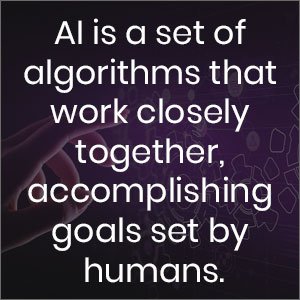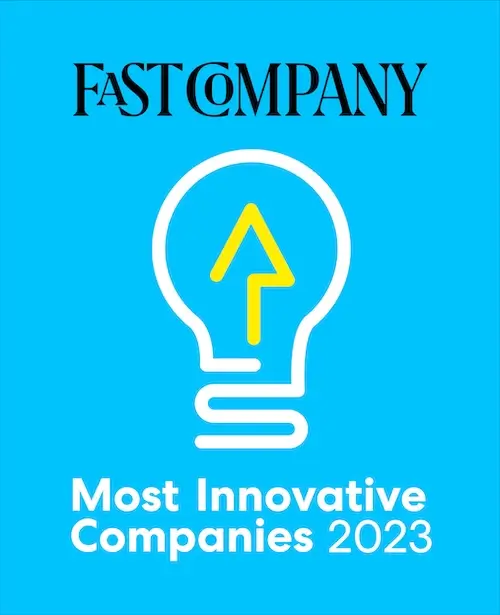Legal could not be a more human profession: it requires an astute mind, incredible mental stamina, and a high degree of emotional intelligence.
But the legal profession is on the verge of a legal digital transformation. It will eventually be reshaped by legal technologies, particularly those powered by artificial intelligence (AI). Decades in the making, AI is the bedrock of some of the most sophisticated forms of automation. Together, AI and automation will lead to increased productivity, and substantial cost savings within legal departments and across businesses.
When confronted with such rapidly progressing technology, however, the natural inclination may be to prevent it from surging ahead. Technological life, after all, can seem like a never-ending series of upgrades – the “cycle of obsolescence” accelerating year after year. There is also the concern that machines or robots will replace human jobs altogether.
Although it is true that some positions may not exist in the coming decade due to AI and automation, the latter is expected to create brand-new jobs, too. The legal roles that will derive from AI and automation promise to be more evolved, engaging, and entirely rewarding than traditional ones. And they will not involve any of those repetitive tasks related to contract management, for instance. Before such technologies were introduced to the legal sector, this was virtually unthinkable.
But the words, “artificial intelligence” and “automation,” are used interchangeably and are often confused with the other. Both terms are synonymous with a wide range of automation technologies and AI-powered solutions, not to mention machine learning. Still, AI systems and automated systems remain distinctive, albeit mutually inclusive, concepts. So, it is important for general counsels (GCs) and legal teams to take careful note of the two.
WHAT ARE AI SYSTEMS?
Essentially, artificial intelligence is a set of algorithms that work closely together, accomplishing goals completely set by humans. AI is tasked with solving problems considered too complicated for the human brain. It is all an effort to make computers think just like humans, only quicker and more analytically.
AI is not anything new, though. In the last decade, a wide variety of AI has made its way into personal and professional lives. Think about the predictive analytics,
AI is a set of algorithms that work closely together, accomplishing goals set by humans.
which Google Maps uses to determine how long your commute will be, and the natural language processing, which powers voice assistants like Siri and Alexa. In fact, there is no aspect of your life that is not – or will not be – touched by AI in one way or another. Competition between AI-driven and traditional firms is happening across industries. For leaders of traditional firms, competing with digital rivals involves more than deploying enterprise software or even building data pipelines, understanding algorithms, and experimenting with the same. It requires ‘rearchitecting’ firms’ operating models altogether.
WHAT ARE AUTOMATED SYSTEMS?
As the word simply suggests, automation is the use of the latest technology to automate repetitive, monotonous tasks and processes. That means no or minimal human intervention. Like AI, automation is not a new concept. What is novel, though, is the number of ways that machines can now attain automation, completing tasks that are rather difficult for humans to perform.
Basically, every single device or machine that operates autonomously could be considered an automated system. These can be described as programmable automation and fixed automation. Just think about customer service, employee analytics, online banking, and payment processing, as well as form auto-filling and digital signatures. The list is practically endless. But one of the best examples of an automated system is the thermostat on one of your newer household appliances.
BUT WHAT’S THE REAL DIFFERENCE BETWEEN AI AND AUTOMATION?
As stated above, both “AI” and “automation” are shorthand for technologies allowing workers to operate more efficiently and effectively. But there are significant differences between AI and automated systems, just as there are those between apples and oranges. Artificial intelligence is purely designed to simulate human thinking, speech, and action. And just like humans, it continuously seeks out patterns, learns from experiences, and then self-selects appropriate responses to situations based on those.
Automation, on the other hand, is driven by manual configuration. It pretty much follows pre-programmed rules and orders, even though it is possible for automated systems to be completely AI-based. Either way, its singular purpose is to free up professionals to focus on more important tasks – perhaps those requiring a more personal touch. With automation, it is a scenario of “If X, then Y.” The “X” that is totally defined clears the way for the automated system to perform the “Y.”
So, unconstrained by rules, AI learns without the contexts that programming generally provides. That said, AI still has all of the potential to supersede human intelligence and behavior with those of machines. Automation may need a little more hand-holding, initially. But without any human intervention thereafter, it can carry out its primary function: speeding up and simplifying various processes.
EMBRACING AI AND AUTOMATION
Historically, the legal sector has been slow to adapt to change, adopt transformational technologies like AI and automation, and undergo a legal digital transformation. Already at work in legal departments in medium- and large-sized organizations, though, AI harnesses computing power to change the way general counsels and other legal professionals operate for the better.
According to a recent Gartner CIO survey, 60 percent of chief information officers have long-term plans for AI.
Automation is using technology to automate repetitive tasks and processes with minimal human help, while 20 percent currently experiment with it. A mere 4 percent have already invested in AI. Clearly, there is really no better time for leaders to carve out digital workplace strategies – those focusing on supporting rather than replacing employees. Still, artificial intelligence need not be sophisticated – or the stuff of science fiction.
As the Harvard Business Review explains it: “As digital networks and algorithms are woven into the fabric of firms, industries begin to function differently and the lines between them blur. The changes extend well beyond born-digital firms, as more-traditional organizations, confronted by new rivals, move toward AI-based models, too.”
Moving forward, both AI and automation will play an increasing role in legal departments and organizations. They will augment and make easy a variety of legal positions, both existing and new. As such, legal professionals ought to embrace AI and automation here and now.
CHECK OUT CONTRACTPODAI’S CLM
ContractPodAi’s own contract lifecycle management (CLM) system is enhanced by AI. It helps general counsels (GCs) and legal teams manage high volumes of contracts and large amounts of data. Natural language processing (NLP), for instance, quickly reviews agreements and provides summaries as part of a smart contract repository. Other elements of the CLM include contract automation; a single system of record for all agreements and related documents; collaborative contract negotiations; workflow improvements; and remote access capabilities. By applying AI analytics, in particular, legal teams can better look at existing contracts and identify key clauses.
This all makes a world of difference during self-quarantines and lockdowns. It makes certain that companies are better prepared for the circumstances of a pandemic and other crises. With such a CLM solution, legal teams can respond to all contract-related inquiries in real time.
Want to learn how an AI-powered CLM can support your contract management? Contact us today, and check out our digital e-book on the stages of legal digital transformation. We love to discuss contract management – and how we can help you make it more efficient.
Author:

Charles Dimov
Connect with us on Linkedin











